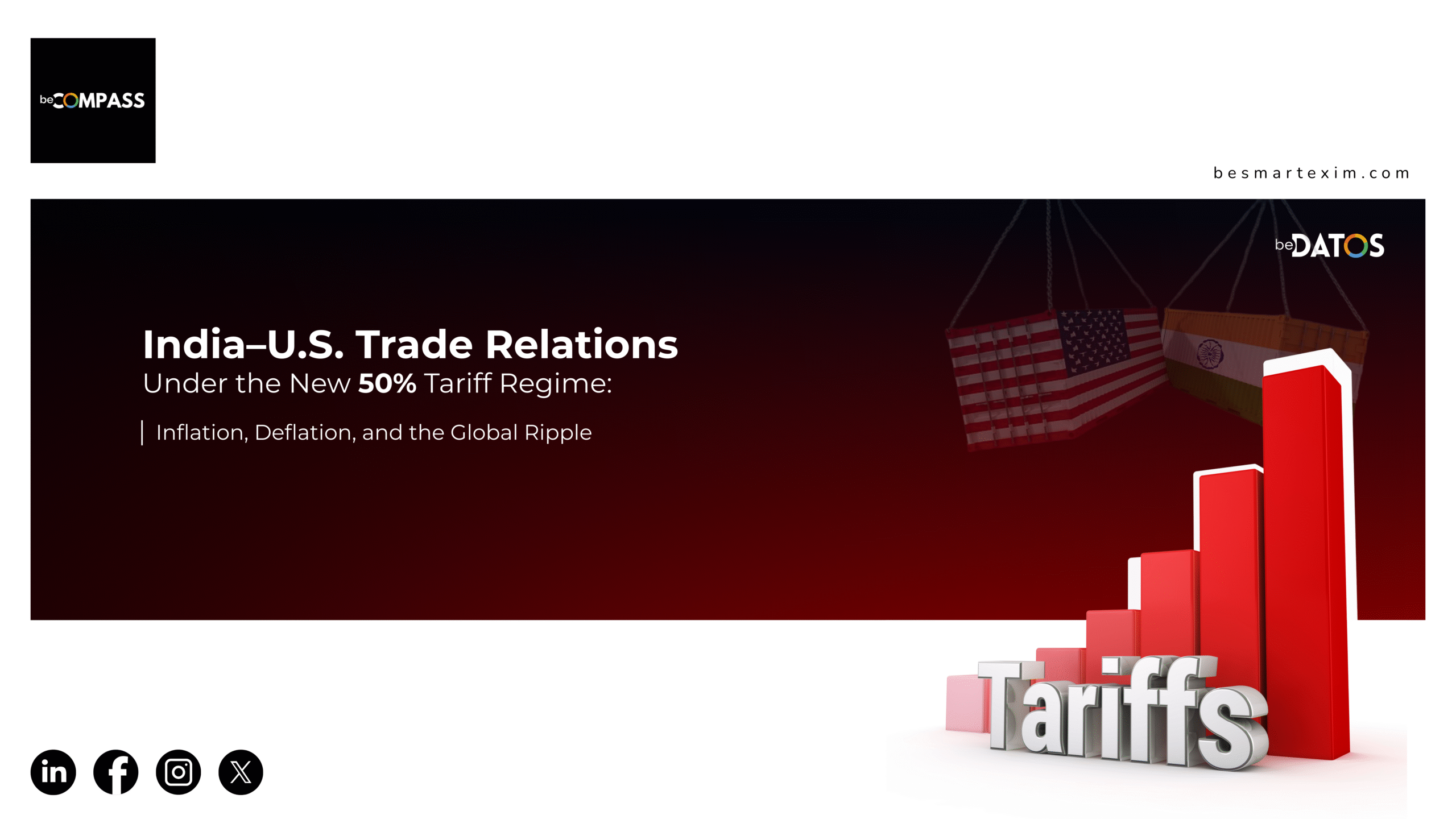
The recent U.S. decision to impose a flat 50% tariff on all Indian exports, along with a broad tariff policy on imports from every country, has shaken international trade circles. This policy change is not targeted; it applies to all goods, no matter where they come from. The move indicates a strong protectionist shift in U.S. trade strategy, with effects extending well beyond the India-U.S. relationship.
The Immediate Shockwave in Global Trade
A universal tariff policy increases the cost of all imported goods for U.S. consumers and businesses. For India, which exported over $78 billion worth of goods to the U.S. in FY2024 (source: Ministry of Commerce & Industry), the flat 50% tariff means a significant rise in market access costs.
Ajay Srivastava, a former Indian Trade Service officer and founder of the Global Trade Research Initiative (GTRI), told The Hindu BusinessLine that although the U.S. is still a key market, Indian exporters have increasingly expanded their destinations. “We are no longer overly dependent on one country,” he said, noting that sectors like pharmaceuticals, IT services, and high-value engineering goods may weather the storm better than low-margin commodity exports.
Inflation in the U.S., Deflation Risks in India
Tariffs on every imported good will likely push U.S. inflation up, especially for products where domestic manufacturing capacity is lacking. The U.S. does not have the supply chain depth to replace imports of many raw materials and intermediate goods. Metals, chemicals, textiles, and electronic components will be impacted.
If the demand for these goods is inelastic, such as medical devices or essential raw materials, American buyers will pay more, no matter the price increase, passing the cost to consumers. As Chad Bown, senior fellow at the Peterson Institute for International Economics, told NPR, “When you raise costs across the board, you’re essentially taxing your own economy.”
On the Indian side, a sudden drop in exports to the U.S. could create surplus stockpiles at home, putting downward pressure on prices. If this issue is not addressed, such an oversupply could lead to slight deflation in some sectors, especially in textiles, leather goods, and low-value consumer items.
Ripple Effects on International Trade
The U.S. policy is not only focused on India; it covers a global range of tariffs. Every country now confronts higher barriers to the U.S. market, which could change trade patterns. Countries with similar exports might shift their sales to other markets, increasing competition in Europe, ASEAN, Africa, and Latin America.
B.V.R. Subrahmanyam, CEO of NITI Aayog and former Commerce Secretary, speaking at a CII event last month, highlighted that India could turn this challenge into an opportunity: “Trade realignment is inevitable. We should use this moment to deepen market penetration in regions where we have preferential trade agreements.”
Do Tariffs Overnight Work in the U.S.’s Favor?
While the political goal of the U.S. move might be to protect local industries, sudden tariffs on all imports are a rough method. Many U.S. industries are closely tied to global supply chains, and switching from imported raw materials to domestic production is not an easy process.
In areas like semiconductors, specialty chemicals, and some types of steel, developing domestic manufacturing capacity can take years and need billions in investment. Until that happens, businesses will have to import at higher costs, which could drive inflation instead of reducing it.
India’s Resilience: Not All Doom and Gloom
Some Indian experts think the fears may be exaggerated. Dr. Arpita Mukherjee, a professor at ICRIER, recently said in an interview with The Economic Times that the impact on India could be managed. She noted, “Our exporters have been adapting to changing tariff regimes by exploring new markets, leveraging FTAs, and moving up the value chain. While certain sectors will feel the pinch, it is not a doomsday scenario.”
Indeed, India’s trade diversification strategy over the past decade, focusing on the EU, the Middle East, and Africa, could provide a cushion. Furthermore, India’s strength in services exports, which are not directly affected by goods tariffs, may help offset some losses.
The Road Ahead
The U.S. tariffs are a major shift in global trade, but their full impact will take time to show. India faces the challenge of quickly redirecting goods to new markets while working to secure better trade deals with partners. For the U.S., the key question is whether this approach will actually boost domestic manufacturing or just lead to higher prices for consumers.
As the two largest democracies in the world deal with this rocky period in trade, one thing stands out: in a connected economy, no tariff policy operates on its own. The effects are already being felt across the globe.

